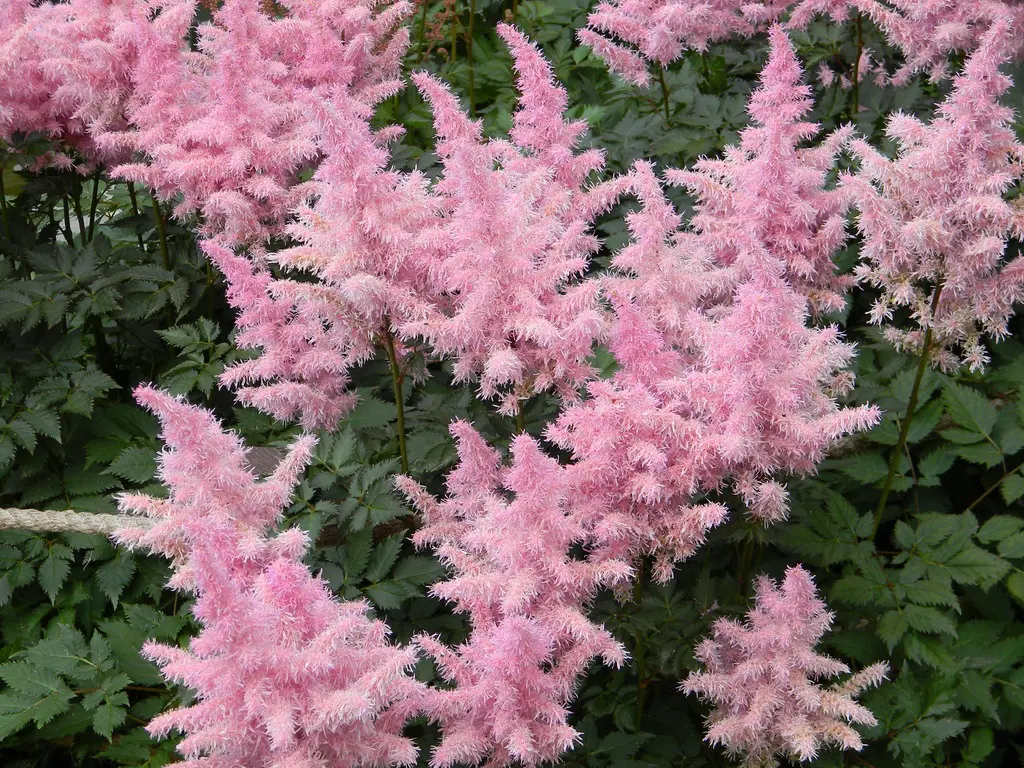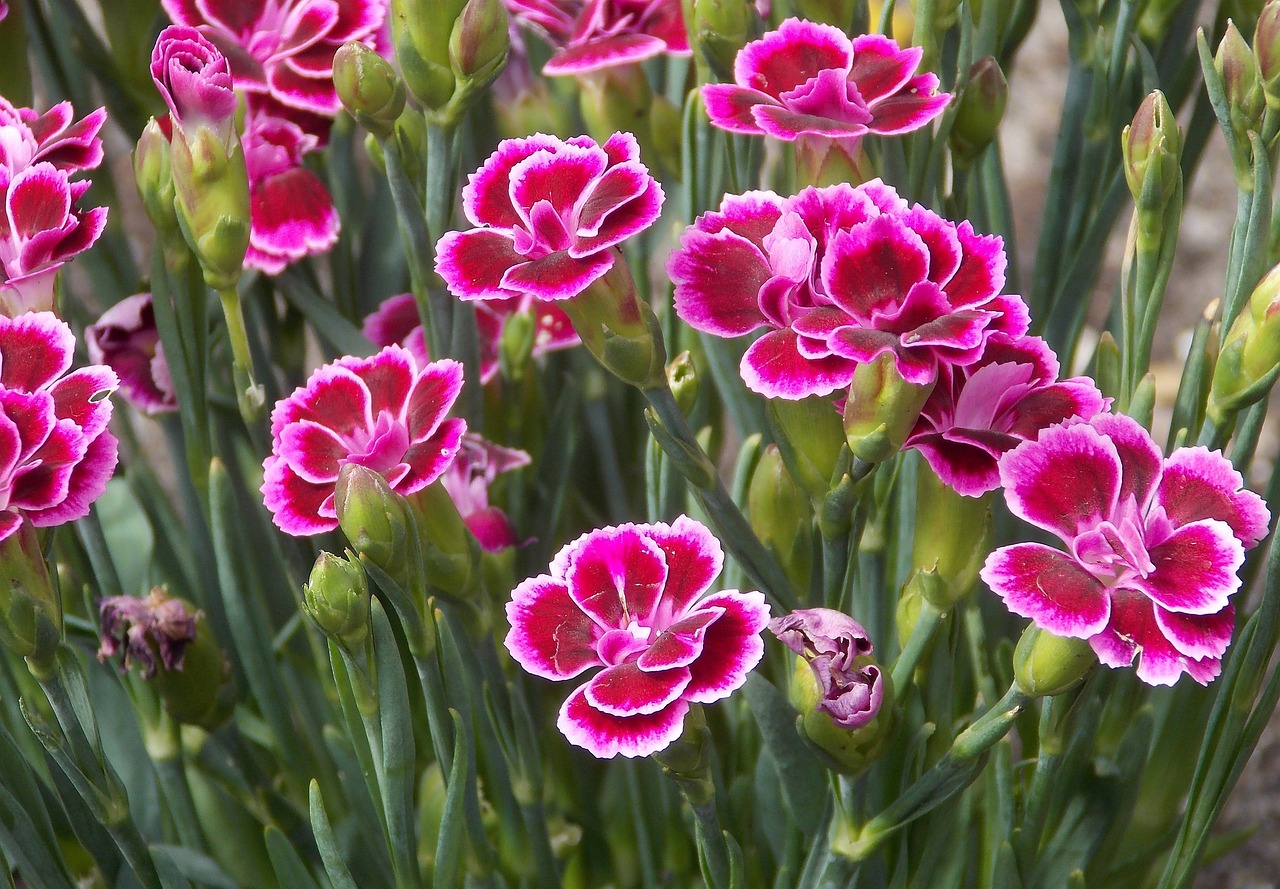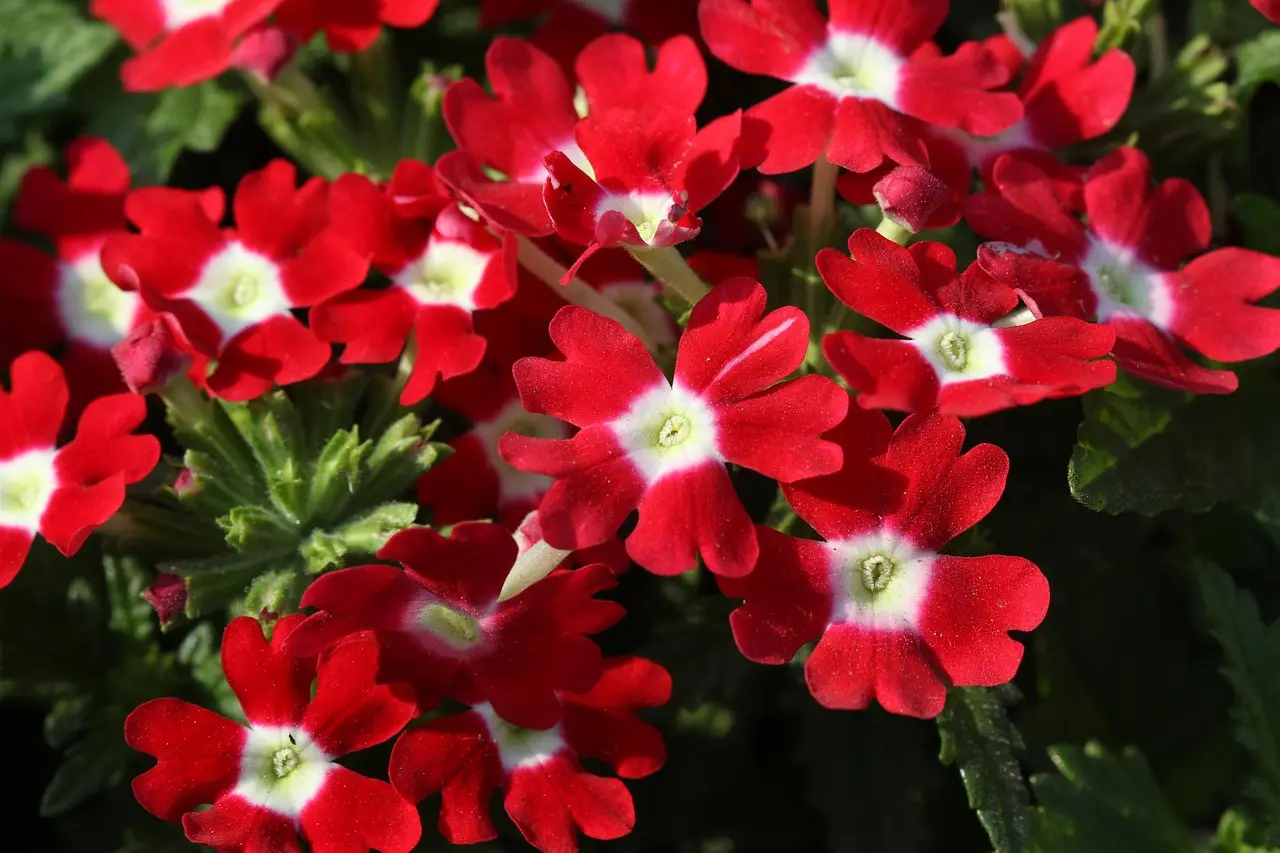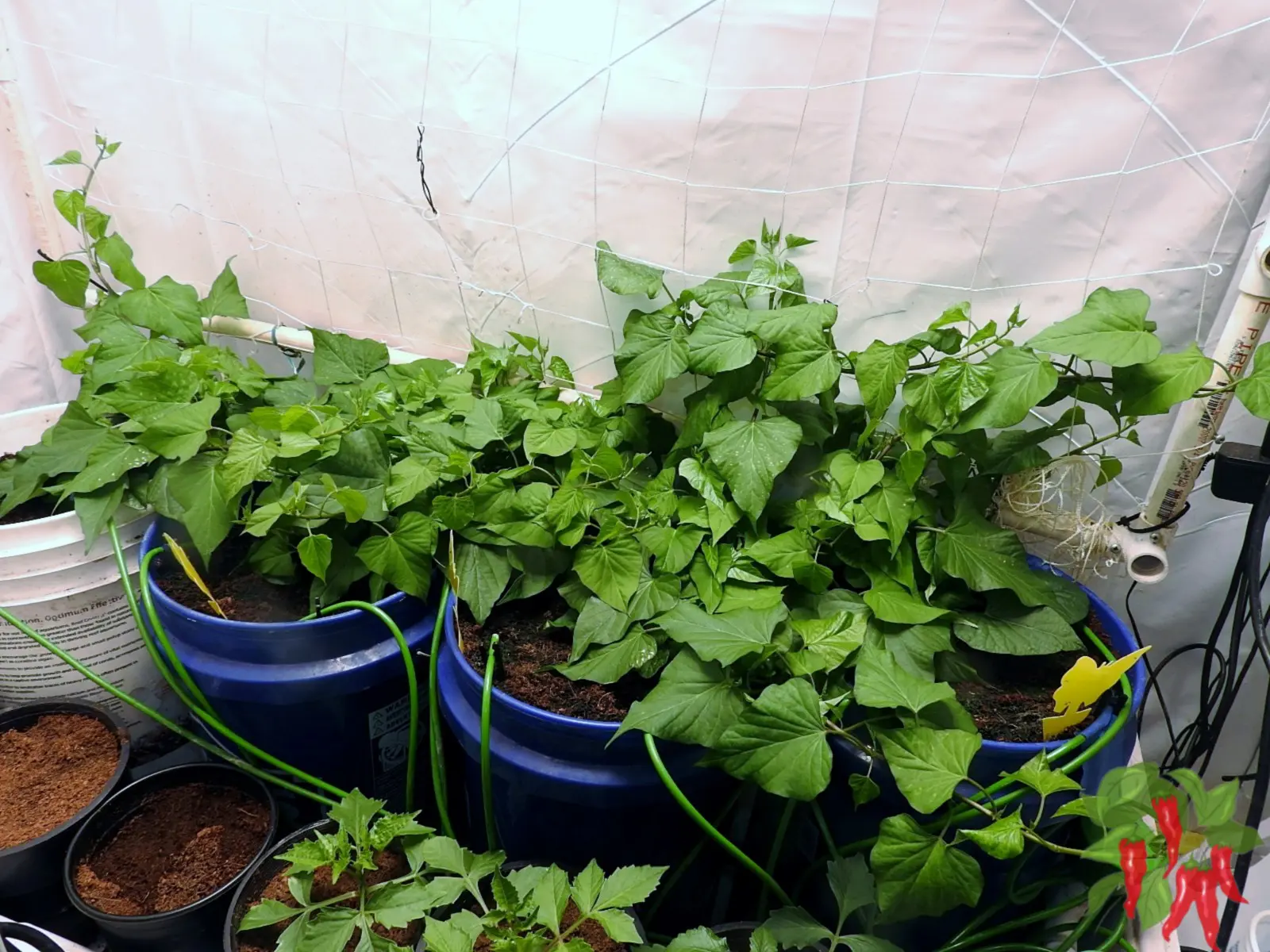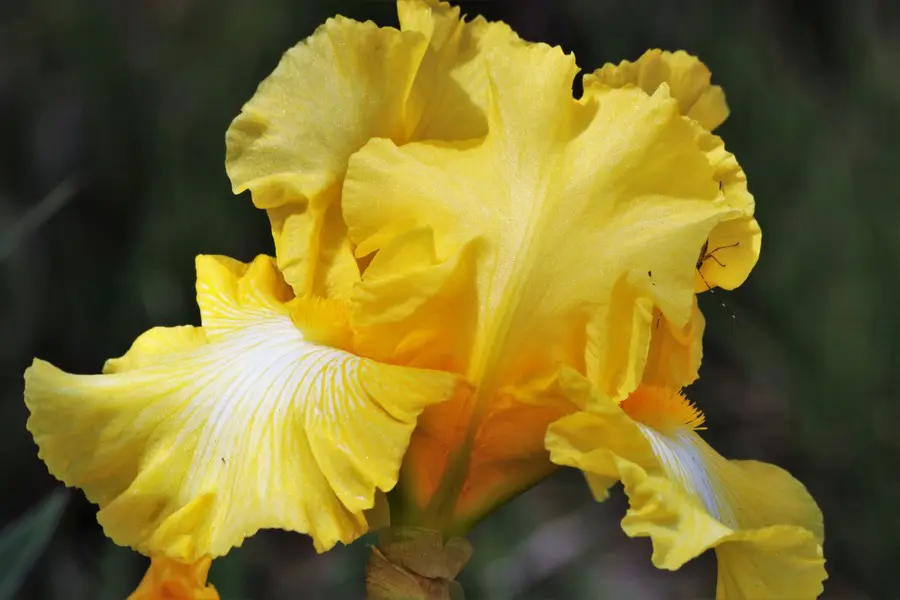This post contains affiliate links. If you buy something from one of our links we may earn a commission. Thanks
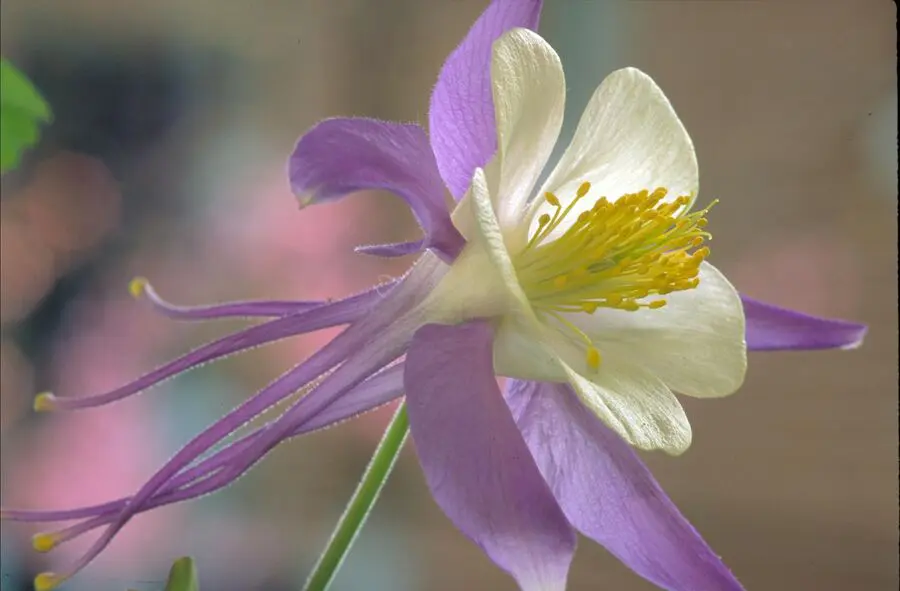
Discover the joy of growing Columbine in containers! Our guide makes it easy with practical tips on care, propagation, and more. Start your gardening journey today!
To grow Columbine in containers, choose a pot with good drainage and fill it with a well-draining potting mix. Plant seeds or young plants, making sure to space them about 1-2 feet apart. Place the container in a spot with partial shade to full sun. Water regularly to keep the soil moist but not soggy. Fertilize lightly in the spring.
Imagine stepping onto your patio to be greeted by the vibrant colors and unique shapes of Columbine flowers, all thriving beautifully in their containers.
Yes, growing Columbine in containers is not just possible, it’s a delightful adventure that brings the charm of these graceful short-lived perennials right to your doorstep.
Whether you’re a seasoned gardener or just starting out, this guide will walk you through the rewarding journey of cultivating these stunning blooms in your own container garden.
You can buy Columbine online here.
Growing Columbine in Containers
Welcome to the world of container gardening with a twist. We’re talking about growing Columbine in containers!
This isn’t your everyday gardening guide; we’re diving into the nitty-gritty of cultivating these enchanting flowers right in your home or patio.
From understanding the various species of Columbine to the ideal conditions for their growth, from planting steps to caring tips, and even propagation methods we’re covering it all.
And yes, we’ve also included a handy FAQ section to answer your burning questions.
So, are you ready to add a touch of nature’s elegance to your space with Columbines? Let’s get started!
Brief Overview of Columbine Flowers
Columbine flowers, scientifically known as Aquilegia, are truly a sight to behold.
With their unique bell-like shape and spurs at the back, they add a touch of whimsy to any garden.
They come in a delightful array of colors, from the softest pastels to the most vibrant hues, making them a favorite among garden enthusiasts.
But it’s not just their beauty that’s captivating. Columbines are also known for their hardiness, ability to thrive in a variety of climates and conditions across North America.
They’re like the superheroes of the flower world, bringing joy and color wherever they grow.
Importance and Benefits of Growing Columbine in Containers
Now, you might be wondering, Why should I consider growing Columbine in containers?
Well, let me tell you, it’s a game-changer.
• First off, container gardening allows you to control the environment your Columbines grow in.
You can ensure they have the perfect soil, the right amount of sunlight, and protect them from pests more effectively.
• Secondly, growing Columbines in containers is a fantastic solution for those with limited garden space.
Whether you live in an apartment with just a small balcony or have a compact backyard, containers allow you to enjoy these beautiful blooms.
• Lastly, containers offer versatility. Want to change the look of your patio? Just move your containers around.
Need to protect your Columbines from harsh weather conditions? Simply bring the containers indoors.
It’s gardening made flexible and fun!
Understanding Columbine Flowers
Before we dive into the how-to’s of growing Columbine in containers, let’s take a moment to truly appreciate these fascinating flowers.
Understanding Columbine flowers is like getting to know a new friend. The more you learn about their characteristics, their likes, and dislikes, the deeper your appreciation grows.
So, let’s embark on this journey of discovery together, exploring the world of Columbines, their various species, and their unique traits.
Ready to get to know your soon-to-be floral companions better? Let’s go!
Description of Columbine Flowers
Columbine flowers are a sight to behold, aren’t they? With their unique bell-like shape and long, backward-pointing spurs, they’re like little pieces of art in your garden.
The flowers dangle gracefully from tall, slender stems, bobbing in the breeze as if nodding in agreement to their own beauty.
And the colors! From the softest pastels to the most vibrant hues, Columbines are a celebration of nature’s palette.
Different Species and Varieties of Columbine
The world of Columbines is wonderfully diverse. With around 60 to 70 species, there’s a Columbine for every taste.
Some popular ones include the Aquilegia canadensis, also known as the Canadian or Wild Columbine or Eastern Red Columbine, known for its red and yellow flowers.
Then there’s the Aquilegia vulgaris, or Granny’s Bonnet, which comes in a variety of colors.
And let’s not forget the Aquilegia caerulea, the Rocky Mountain Columbine, with its stunning blue and white flowers.
Each species has its own charm, adding to the rich tapestry of the Columbine family.
How Tall Does Columbine Grow
Columbines are like the Goldilocks of the flower world – not too short, not too tall, just right.
On average, they grow to a height of about 15 to 20 inches, although some species can reach up to 3 feet.
This makes them perfect for containers, as they provide a beautiful display without overwhelming the space.
How Long Do Columbines Bloom
One of the joys of growing Columbines is their generous blooming period.
Typically, these beauties start to bloom in late spring and continue through early summer.
Depending on the weather and care, you can expect to enjoy their vibrant display for about 4 to 6 weeks. Now, that’s a lot of blooming time!
Does Columbine Spread
Columbines do have a bit of a wanderlust. They’re self-seeders, which means they drop seeds that can sprout and grow into new plants.
This can lead to a delightful scattering of Columbines in your garden or container.
However, they’re not aggressive spreaders, so you won’t have to worry about them taking over.
It’s more like a gentle expansion of beauty.
Benefits of Growing Columbine in Containers
Have you ever considered the magic of container gardening?
It’s like having a portable piece of nature that you can place anywhere like your patio, balcony, or even indoors!
Now, imagine that flexibility with the stunning beauty of Columbines. Growing Columbine in containers is like having a movable feast for the eyes.
But the benefits don’t stop at the visual delight. Let’s delve deeper into the advantages of this gardening approach and why Columbines and containers make such a fantastic pair.
Space Efficiency
One of the biggest perks of growing Columbine in containers is space efficiency.
Not everyone has a sprawling garden or a large backyard, right? But lack of space shouldn’t deter you from enjoying the beauty of these flowers.
Containers can fit into any nook and cranny you have available. Got a small balcony? Perfect. A sunny window ledge? Even better.
With containers, you can create your own mini garden oasis, no matter how limited your space might be.
Ease of Care
Caring for Columbines in containers can be surprisingly easy.
You have more control over the environment, which means you can ensure the soil drainage is just right, move the container to get the perfect amount of sunlight, and even bring them indoors during harsh weather conditions.
Plus, it’s easier to keep an eye on any pest issues or diseases when your plants are in containers.
Versatility in Positioning
And let’s not forget the versatility that comes with container gardening. Want to add a splash of color to your patio? Just place your Columbine container there.
Need a centerpiece for your outdoor table? Your Columbine container is ready to shine. The options are endless.
You can move your containers around as you please, changing the look and feel of your space with ease.
It’s like being an interior designer but for your outdoor spaces!
Ideal Conditions for Growing Columbine
Imagine if your Columbine flowers could talk. What would they tell you about their ideal living conditions?
While we may not be able to chat with our plants (yet!), we can certainly learn to understand their needs.
Just like us, Columbines have their preferences when it comes to sunlight, soil, and climate.
By creating these ideal conditions, we can help our Columbines thrive and bloom in all their glory.
So, let’s roll up our sleeves and dive into the world of Columbine care. Ready to become a Columbine whisperer? Let’s get started!
Soil Requirements
Columbines aren’t too fussy about their soil, but they do have their preferences.
They like well-draining soil, which means soil that allows water to percolate through it rather quickly.
This is important because Columbines don’t like to have wet feet. If they’re left in waterlogged soil, they can rot.
They also prefer a neutral pH, but they’re pretty adaptable and can tolerate a range from slightly acidic to slightly alkaline.
If you’re growing them in containers, a good quality all-purpose potting mix should do the trick!
Preferred Soil Mix (Coco Coir and Perlite)
When it comes to soil, Columbines aren’t overly picky, but they do appreciate a well-draining mix.
This is where coco coir and perlite come into play.
Coco coir, made from the husk of coconuts, is a fantastic medium for container gardening.
It’s light, retains moisture well, and yet allows for good drainage. It also has a near-neutral pH, which Columbines prefer.
Now, let’s talk about perlite. Those little white specks you often see in potting mixes? That’s perlite.
It’s a type of volcanic glass that’s heated until it pops like popcorn, resulting in a lightweight material that’s excellent for improving soil drainage.
So, how about creating a potting mix with coco coir and perlite for your Columbines?
You can use a ratio of about 70% coco coir and 30% perlite. This mix will retain just enough water to keep the Columbines happy while ensuring any excess drains away quickly.
Plus, it’s light enough to allow the Columbine’s roots to spread out comfortably.
Remember, the goal is to create a potting mix that mimics the Columbine’s natural growing conditions.
With coco coir and perlite, you’re well on your way to providing your Columbines with a comfortable and nurturing home.
Sunlight Requirements
When it comes to sunlight, Columbines enjoy a bit of a sun and shade mix.
They love full to partial sun, but they also appreciate some afternoon shade, especially in hotter climates.
This is because while they enjoy the warmth of the sun, they can get a bit too hot under the collar in intense heat.
So, a spot that gets plenty of morning sun and a bit of afternoon shade would be ideal for your container-grown Columbines.
Temperature and Climate Preferences
Columbines are cool-season perennial plants, which means they enjoy cooler temperatures.
They’re hardy plants and can tolerate a range of climates, but they’re not big fans of hot and humid summers.
If you live in a region with such a climate, providing some shade during the hottest part of the day can help keep your Columbines happy.
On the other end of the spectrum, Columbines can also tolerate cold winters, making them a versatile choice for a variety of locations.
Growing columbine in containers
Alright, we’ve covered the basics and understood the ideal conditions for Columbines.
Now comes the exciting part, actually growing Columbine in containers!
This is where we roll up our sleeves and get our hands a little dirty.
But don’t worry, I’ll be with you every step of the way, guiding you through choosing the right container, preparing the soil, and all the other essentials.
So, are you ready to embark on this gardening adventure? Let’s get started!
Choosing the Right Container
Choosing the right container for your Columbine is like finding the perfect home for it.
You want something that’s comfortable, provides room to grow, and of course, looks good!
But the most important factor to consider is drainage. Columbines don’t like waterlogged soil, so a container with good drainage holes is essential.
Materials can vary. You can choose from plastic, ceramic, terracotta, or even wood, as long as it provides good drainage.
Columbine Container Size
When it comes to size, Columbines need a bit of space. They’re not the most demanding plants, but they do appreciate some room to stretch their roots.
A container that’s about 12 to 18 inches in diameter should be sufficient for a single Columbine plant.
If you’re planning to grow more than one Columbine in a container, you’ll need to size up accordingly.
Remember, the goal is to give your Columbines enough space to grow without crowding them.
Preparing the Soil
We’ve already talked about the ideal soil for Columbines is a well-draining mix with a neutral pH.
If you’re using a coco coir and perlite mix, you’re already on the right track.
To prepare the soil, fill your container with the mix, leaving a few inches at the top.
Before planting, water the soil lightly to provide a moist (but not soggy) environment for your Columbine.
This will help the roots establish more easily once planted.
Remember, the key is to create a nurturing environment that mimics the Columbine’s natural growing conditions.
How to grow columbine from seed
Growing Columbine from seed is a rewarding journey. It’s like watching a tiny miracle unfold as the small seeds transform into beautiful, blooming plants.
But how do you start? What are the steps involved? And how can you ensure your seeds grow into healthy Columbines?
Don’t worry, I’ve got you covered. In this section, we’ll walk through the process step by step, from planting the seeds to positioning the container. So, let’s get ready to sow some Columbine magic!
Planting the Seeds or Seedlings
Whether you’re starting with seeds or seedlings, the process begins with your prepared container.
For seeds, scatter them lightly on top of the soil. You don’t need to bury them deep as Columbine seeds actually need some light to germinate.
If you’re planting seedlings, make a small hole in the soil, place the seedling in, and gently cover the roots with the soil.
How Deep to Plant Columbine Seeds
Columbine seeds are a bit different from some other seeds you might have planted.
They don’t need to be buried deep in the soil. In fact, they should be sown right on the surface of your soil mix.
Lightly press them into the soil, but don’t cover them completely. They need some light to germinate successfully.
Columbine Germination Temperature
Columbines aren’t too picky about temperature when it comes to germination.
They can germinate in a fairly wide range of temperatures, but they prefer it on the cooler side.
A temperature of around 65 to 70 degrees Fahrenheit (18 to 21 degrees Celsius) is ideal.
If you’re germinating them indoors, a cool room or a spot away from direct heat should work well.
Positioning the Container
Once your seeds are sown, it’s time to find the perfect spot for your container.
Remember, Columbines like full to partial sun, with some afternoon shade.
So, a spot that gets plenty of morning sun and a bit of shade in the afternoon would be perfect.
If you’re growing them indoors, a sunny windowsill would work well.
How Long Does It Take Columbine to Bloom from Seeds
Patience is key when growing Columbines from seeds. It can take anywhere from 22 to 30 days for the seeds to germinate.
After that, you’ll see the seedlings start to grow, but it will be a while before you see any blooms.
Typically, Columbines will bloom in their second year of growth. But the wait is worth it.
When those blooms finally appear, you’ll be rewarded with a stunning display of color and beauty.
Do columbine seeds need stratification?
Yes, Columbine seeds often benefit from a process called stratification.
Stratification is a method of simulating the natural late winter conditions that a seed would experience outdoors in the wild.
This process breaks the seed’s dormancy and encourages germination.
For Columbines, cold stratification is typically recommended. This involves exposing the seeds to a cold and often moist environment for a specific period of time.
You can do this by placing your seeds in a sealed plastic bag with moistened vermiculite, sand, or even a damp paper towel, and then storing them in the refrigerator for about 3-4 weeks.
After the stratification period, the seeds are ready to be sown in your prepared soil.
Remember, Columbine seeds need light to germinate, so they should be sown on the surface of the soil.
However, it’s important to note that not all Columbine seeds require stratification.
Some varieties, particularly those that are commercially packaged, may have been pre-treated and are ready to sow.
It’s always a good idea to check the seed packet instructions to see if stratification is recommended for your specific seeds.
Caring for Columbine in Containers
Once your Columbine seeds have sprouted and your plants are growing, the journey isn’t over. In fact, it’s just beginning!
Caring for your Columbines is an ongoing process, but it’s also a rewarding one.
Watching your plants thrive and bloom as a result of your care is a truly satisfying experience.
In this section, we’ll explore how to keep your container-grown Columbines happy and healthy, from watering and fertilizing to dealing with pests and diseases.
So, let’s roll up our sleeves and dive into the world of Columbine care!
Watering Schedule and Techniques
Watering is an essential part of caring for your Columbines, but it’s also a bit of a balancing act.
Columbines prefer evenly moist soil, but they don’t like to be waterlogged.
A good rule of thumb is to water when the top inch of soil feels dry to the touch.
When watering, aim to water the soil, not the leaves, to help prevent fungal diseases.
And remember, containers can dry out faster than garden soil, especially in hot weather, so check your plants regularly to ensure they’re getting enough moisture.
Fertilizer Requirements and Application
Columbines aren’t heavy feeders, but they do appreciate a bit of extra nutrition during the growing season.
A balanced liquid fertilizer applied once a month should do the trick.
Look for a fertilizer with an equal ratio of nitrogen, phosphorus, and potassium (such as a 10-10-10) for the best results.
Always follow the package instructions for the correct dosage and application method.
Dealing with Common Pests and Diseases
Like all plants, Columbines can be susceptible to certain pests and diseases.
Leaf miners, aphids, and powdery mildew are some common issues.
For pests like leaf miners and aphids, removing affected leaves or treating with a natural insecticidal soap or neem oil can help.
For a fungal disease like powdery mildew, ensure good air circulation, avoid overhead watering, and consider using an organic fungicide if necessary.
Pruning and Deadheading Columbine
Pruning and deadheading are important parts of Columbine care.
Pruning involves removing any dead or diseased parts of the plant to promote healthy growth.
Deadheading, or removing spent flowers, can encourage your Columbines to produce more blooms.
After the blooming season, you can cut back the foliage by about half to keep your plants looking tidy.
Just remember to be gentle – Columbines are somewhat delicate plants!
Winterizing Columbine
Understanding Columbine’s Winter Needs
Columbines are hardy plants, but winter can still be a challenging time for them, especially when grown in containers.
It’s important to understand that during winter, Columbines go into a state of dormancy.
This means they’re not dead, just resting, and preparing for the following spring.
Preparing Your Columbine for Winter
Before the first frost hits, take some time to prepare your Columbines for winter. T
This includes tasks like pruning back dead or dying foliage and cleaning up any fallen leaves or debris around your plant.
This not only keeps your plant looking tidy, but also helps prevent the spread of diseases.
Protecting Your Potted Columbine During Winter
The key to protecting your potted Columbine during winter is insulation.
The roots of container plants are more exposed to cold temperatures than those planted in the ground.
Consider wrapping your pots in bubble wrap or burlap to provide an extra layer of mulch for protection.
Also, if possible, move your pots to a sheltered location, like a patio or against a wall, to shield them from harsh winds.
You can also overwinter them in a cool place like a garage.
Welcoming Spring: Waking Your Columbine from Winter Dormancy
As winter ends and signs of spring begin to appear, it’s time to wake your Columbine from its winter dormancy.
Start by gradually reintroducing water. Be careful not to overwater, as this can lead to root rot.
As the weather warms, you’ll start to see signs of new growth, signaling the start of another beautiful growing season for your Columbine.
Propagation of Columbine
Have you ever looked at your beautiful Columbine flowers and wished you could have more of them?
Well, you’re in luck! Columbines can be propagated, or multiplied, through seeds or division.
This means you can create new young plants from the one you already have. It’s like a gift that keeps on giving!
In this section, we’ll walk through the steps of propagation, so you can spread the Columbine love around your garden, or even share with friends and family.
Ready to create a Columbine family tree? Let’s get started!
Propagation through Seeds
Growing Columbines from seeds is a journey that’s both fascinating and rewarding.
It’s like watching a tiny miracle unfold as these small seeds transform into beautiful, blooming plants.
But how do you start? What are the steps involved? And how can you ensure your seeds grow into healthy Columbines? Let’s delve into the step-by-step process of propagating Columbines through seeds.
Propagation through Seeds – Step by Step
Collect Seeds: After your Columbine has bloomed and the flowers have faded, you’ll notice seed pods forming.
Once these pods dry out and open up, you can collect the seeds.
You can buy Columbine seeds online.
Stratify Seeds: Remember, Columbine seeds benefit from cold stratification.
Place the seeds in a sealed plastic bag with moistened vermiculite or a damp paper towel, and store them in the refrigerator for about 3-4 weeks.
Sow Seeds: After stratification, sow the seeds on the surface of your soil mix in a seed tray or container.
Remember, Columbine seeds need light to germinate, so don’t bury them.
Care for Seedlings: Once the seeds have germinated and seedlings have sprouted, care for them by providing adequate water and light.
Once they’re big enough, you can transplant them to their own containers or spots in your garden.
Propagation through Division
Did you know you can create new Columbine plants from the one you already have?
Yes, it’s possible through a process called division. It’s like giving your Columbine a new lease on life, and it’s a great way to multiply your plants quickly.
But how do you do it? What’s the right way to divide a Columbine?
Let’s explore the step-by-step process of propagating Columbines through division.
Propagation through Division – Step by Step
Choose the Right Time: The best time to divide Columbines is in the early spring or fall when the plant is not in its active growing phase.
Prepare the Plant: Water your Columbine parent plant a day before you plan to divide it. This will make the process less stressful for the plant.
Dig Up the Plant: Carefully dig around the base of your Columbine, making sure to get as much of the root system as possible. Lift the plant out of the ground.
Divide the Plant: Using a sharp, clean knife, divide the plant into sections. Each section should have both roots and shoots.
Plant the Divisions: Plant each division in a prepared hole or container, making sure the top of the root ball is level with the soil surface. Backfill with soil, firm it gently, and water well.
Remember, propagation is a process that requires patience.
But with time and care, you’ll be rewarded with new Columbine plants to enjoy or share!
Using Columbine In The Landscape
Columbines, with their delicate, nodding flowers and attractive foliage, are a versatile addition to any landscape.
They can add a touch of elegance and a splash of color to various garden settings.
Whether you’re designing a rock garden, planning a garden bed, or creating a woodland garden, Columbines can play a starring role.
Let’s explore how you can incorporate these beautiful blooms into different parts of your landscape.
Columbine Uses in Rock Gardens:
Rock gardens are all about creating a rugged, natural look, and Columbines fit right in.
Their ability to thrive in well-drained soils makes them an excellent choice for rock gardens.
The delicate, intricate flowers of the Columbine provide a striking contrast against the hard, rough textures of the rocks.
Plus, many Columbine varieties are alpine species, meaning they’re naturally adapted to rocky environments.
Plant them in crevices or at the edges of your rock garden, where their elegant blooms can spill over and soften the hard lines.
Columbine Uses in Garden Beds:
Garden beds are often the centerpiece of a landscape, and Columbines can help make them stand out.
Their unique, colorful flowers can serve as a focal point in a garden bed, drawing the eye and adding visual interest.
Columbines also have a relatively compact growth habit, so they won’t crowd out other plants in your garden bed.
Plant them alongside other perennials with similar light and water requirements, and enjoy the beautiful, diverse display they create together.
Columbine Uses in Woodland Gardens:
Woodland gardens aim to recreate the serene beauty of a forest floor, and Columbines are a natural fit.
Many Columbine species are native to woodland environments, so they’re well-suited to the dappled shade and rich, organic soil of a woodland garden.
Their graceful, nodding flowers can add a touch of whimsy to the understory, while their fern-like foliage blends well with the surrounding greenery.
Plant them among ferns, hostas, and other shade-loving plants to create a lush, tranquil woodland retreat.
FAQs
Got questions about growing Columbines in containers? You’re not alone! In this section, we’ll tackle some of the most common queries gardeners have about these beautiful plants.
From their container preferences to their fertilizer needs, we’ve got the answers. Let’s dive into these FAQs!
Q: Does Columbine do well in containers?
A: Absolutely! Columbines adapt well to container life. They appreciate the drainage and controlled environment that containers provide.
Just make sure to choose a container with good drainage and enough space for the plant to grow.
Q: Do Columbines like sun or shade?
A: Columbines are quite flexible when it comes to sunlight. They can thrive in full sun to partial shade. However, in hotter climates, they appreciate some afternoon shade to protect them from intense heat.
Q: How do you keep Columbine blooming?
A: Keeping your Columbine blooming involves regular watering, proper fertilization, and deadheading.
Deadheading, or removing spent flowers, encourages the plant to produce more blooms.
Also, providing the right amount of sunlight and maintaining a healthy soil can contribute to a longer blooming period.
Q: What is the best fertilizer for Columbines?
A: Columbines aren’t heavy feeders, but they do appreciate a bit of extra nutrition during the growing season.
A balanced liquid fertilizer with an equal ratio of nitrogen, phosphorus, and potassium (such as a 10-10-10) is usually a good choice.
Always follow the package instructions for the correct dosage and application method.
Conclusion
As we reach the end of our Columbine journey, it’s time to take a moment and reflect on what we’ve learned.
From understanding the nature of Columbines to the intricacies of growing them in containers, we’ve covered a lot of ground.
But the beauty of gardening is that there’s always more to learn, more to explore.
So, as we wrap up, let’s revisit the key points and look forward to the joy of growing our own Columbines.
Ready for the recap? Let’s dive in!
Recap of the Importance and Process of Growing Columbine in Containers
Growing Columbine in containers is not just a gardening activity, it’s a rewarding experience.
These beautiful flowers, with their unique shapes and vibrant colors, can bring a touch of nature’s artistry to any space.
And the best part? You can grow them right at home, in containers!
We’ve learned that Columbines are versatile plants that adapt well to container life.
We’ve explored the ideal conditions for their growth, the right soil, the perfect balance of sunlight, and the preferred climate.
We’ve delved into the process of planting them, from choosing the right container and preparing the soil, to sowing the seeds and caring for the seedlings.
We’ve also discussed the ongoing care they need, including watering, fertilizing, and dealing with pests and diseases.
Encouragement For Growing Your Own Columbine
Now that you’re armed with all this knowledge, why not give it a try? Growing your own Columbine can be a fun and fulfilling project.
Whether you’re a seasoned gardener or a beginner, Columbines are a great addition to your garden or home.
Plus, the joy of watching your seeds or seedlings grow into blooming plants is truly unmatched.
So, go ahead, get your hands a little dirty, and embark on this gardening adventure.
Remember, every plant you grow adds a bit more green to the world. And who knows? You might just find that growing Columbines becomes your new favorite hobby!
Read more: Backyard Gardening Ideas













